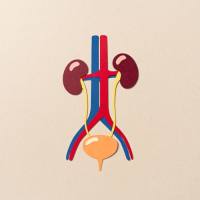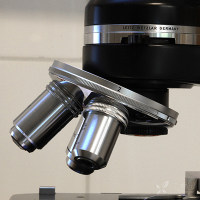【medical-news】【资讯翻译】全谱结肠镜检腺瘤丢失率更低
请根据自己专业背景选择认领,如使用翻译软件翻译,被发现者扣分1-2分
新近参与本次活动的会员请查看: http://news.dxy.cn/bbs/topic/21537141
寻找最近的翻译贴请查看: http://search.dxy.cn/?words=%E8%B5%84%E8%AE%AF%E7%BF%BB%E8%AF%91&bid=116&t=1&c=1&age=7&bid=116&limit=30&o=1
翻译时请参照版规 【版务】科技动态版版规及加分细则( 2014-02-21 更新)
Lower Adenoma Miss Rate With Full-Spectrum vs Standard Forward-Viewing Colonoscopy
http://www.ascopost.com/ViewNews.aspx?nid=13971
Key Points:
Adenoma miss rates were 7% with full-spectrum endoscopy colonoscopy and 41% with standard forward-viewing colonoscopy.
Five patients with no adenomas detected on standard colonoscopy subsequently had adenomas detected on full-spectrum colonoscopy, whereas subsequent standard colonoscopy did not detect adenomas in patients with no adenomas on full-spectrum colonoscopy.
In a study reported in The Lancet Oncology, Gralnek et al found that full-spectrum endoscopic colonoscopy had a lower adenoma miss rate compared with standard forward-viewing colonoscopy.
Study Details
In the study, performed at three sites in Israel, one in the Netherlands, and two in the United States, 197 patients aged 18 to 70 years who were referred for colorectal cancer screening, polyp surveillance, or diagnostic assessment underwent same-day, back-to-back tandem colonoscopy with a standard forward-viewing colonoscope and a full-spectrum endoscopy colonoscope. A total of 185 participants were included in the per-protocol analyses, with 88 (48%) receiving standard colonoscopy first, and 97 (52%) receiving full-spectrum colonoscopy first.
For the patients receiving full-spectrum colonoscopy first and the patients receiving standard colonoscopy first, median ages were 56 and 57 years, 52% and 57% were female, and indications for colonoscopy were screening in 60% and 52%, surveillance in 18% and 21%, diagnostic assessment in 22% and 28%, and total adenoma detection in 34% and 35%.
Outcomes
On per-lesion analysis, 62 adenomas were detected in the full-spectrum colonoscopy–first group, with five adenomas missed by full-spectrum colonoscopy detected with subsequent standard colonoscopy. A total of 29 lesions were detected in the standard colonoscopy–first group, with 20 adenomas missed by standard colonoscopy subsequently detected with full-spectrum colonoscopy. Thus, the adenoma miss rates were 5 (7%) of 67 for full-spectrum colonoscopy vs 20 (41%) of 49 for standard colonoscopy (P < .0001).
On per-patient analysis, standard colonoscopy missed 20 adenomas in 15 patients, of which 3 (15%) were advanced adenomas. Full-spectrum endoscopy missed five adenomas in five patients, of which none was advanced. Five patients in the standard colonoscopy–first group (6%) with no adenomas detected subsequently had adenomas detected on full-spectrum colonoscopy. No patients in the full-spectrum colonoscopy–first group with no adenomas detected subsequently had adenomas detected on standard colonoscopy.
Five minor adverse events were observed, consisting of vomiting, cystitis, bleeding, and gastroenteritis in the full-spectrum colonoscopy–first group and diarrhea in the standard colonoscopy–first group.
The investigators concluded, “Full-spectrum endoscopy represents a technology advancement for colonoscopy and could improve the efficacy of colorectal cancer screening and surveillance.















































